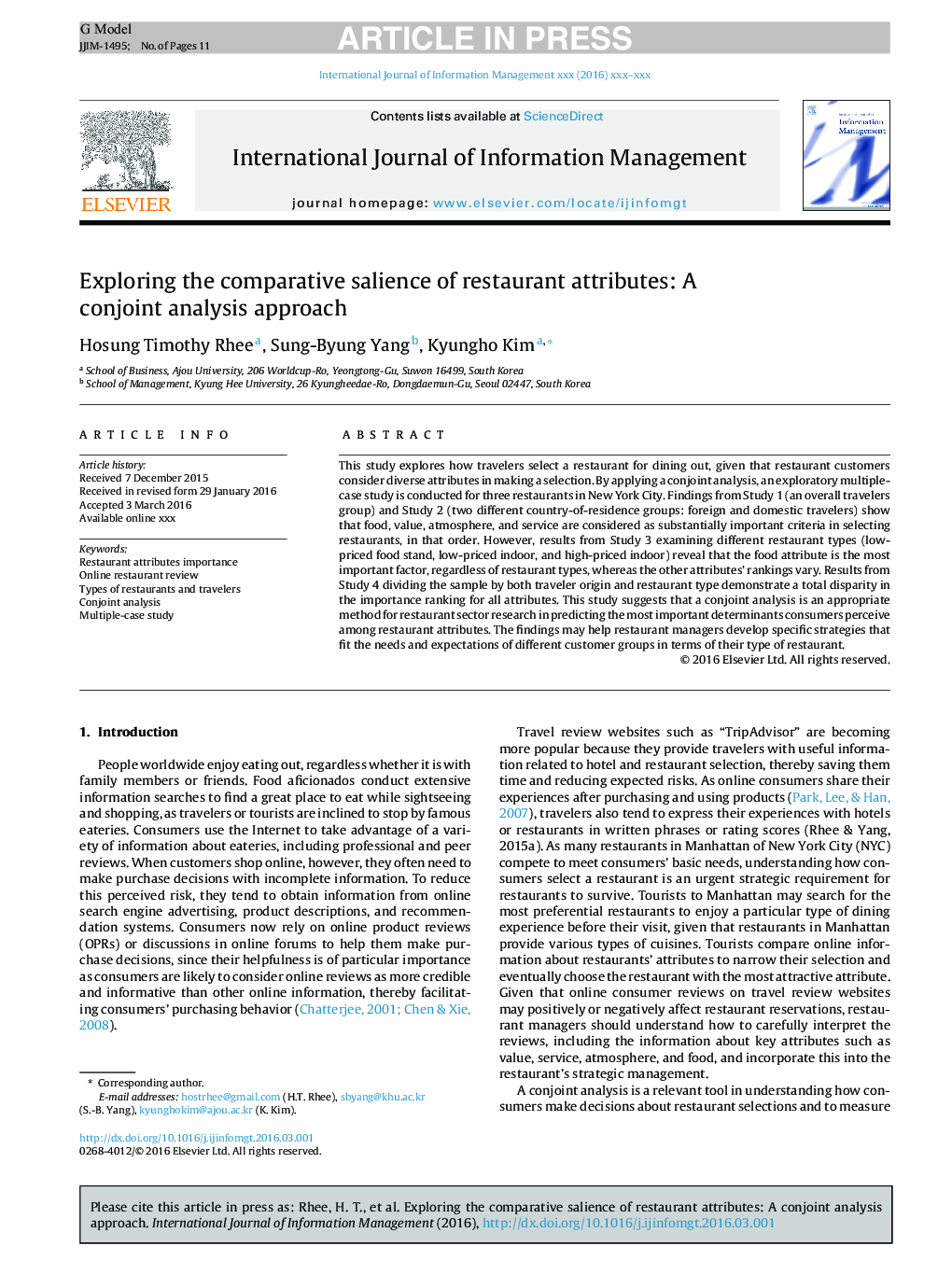| Article ID | Journal | Published Year | Pages | File Type |
|---|---|---|---|---|
| 5110863 | International Journal of Information Management | 2016 | 11 Pages |
Abstract
This study explores how travelers select a restaurant for dining out, given that restaurant customers consider diverse attributes in making a selection. By applying a conjoint analysis, an exploratory multiple-case study is conducted for three restaurants in New York City. Findings from Study 1 (an overall travelers group) and Study 2 (two different country-of-residence groups: foreign and domestic travelers) show that food, value, atmosphere, and service are considered as substantially important criteria in selecting restaurants, in that order. However, results from Study 3 examining different restaurant types (low-priced food stand, low-priced indoor, and high-priced indoor) reveal that the food attribute is the most important factor, regardless of restaurant types, whereas the other attributes' rankings vary. Results from Study 4 dividing the sample by both traveler origin and restaurant type demonstrate a total disparity in the importance ranking for all attributes. This study suggests that a conjoint analysis is an appropriate method for restaurant sector research in predicting the most important determinants consumers perceive among restaurant attributes. The findings may help restaurant managers develop specific strategies that fit the needs and expectations of different customer groups in terms of their type of restaurant.
Keywords
Related Topics
Social Sciences and Humanities
Business, Management and Accounting
Management Information Systems
Authors
Hosung Timothy Rhee, Sung-Byung Yang, Kyungho Kim,
